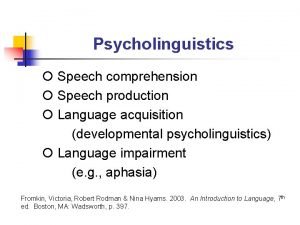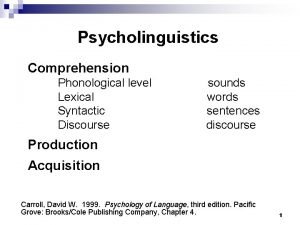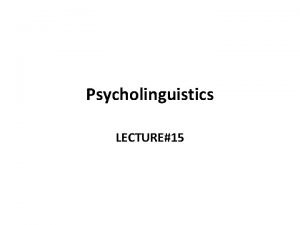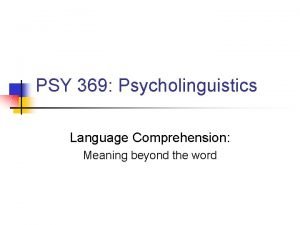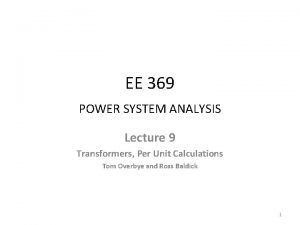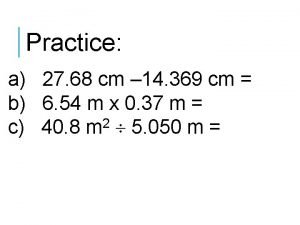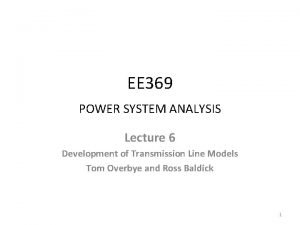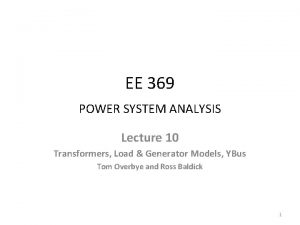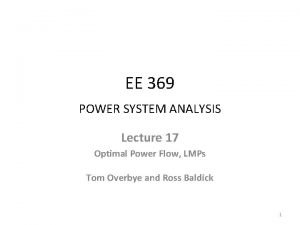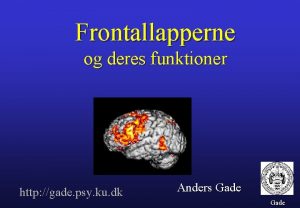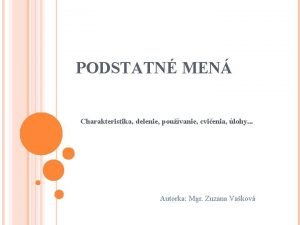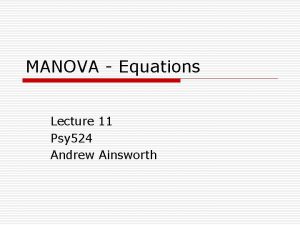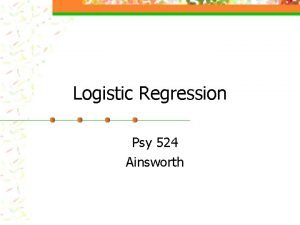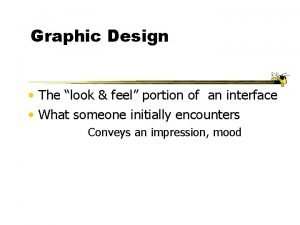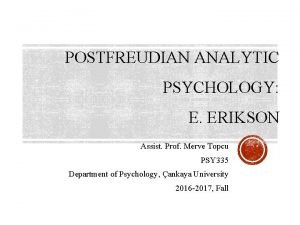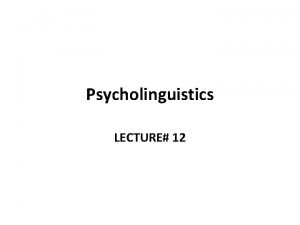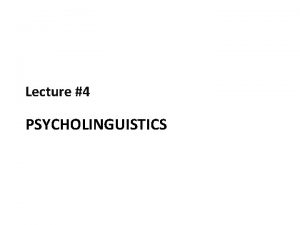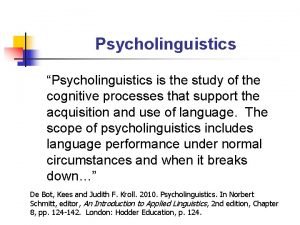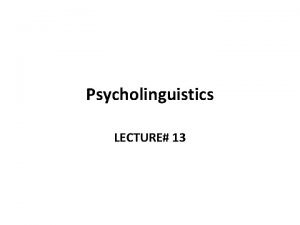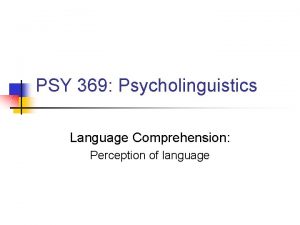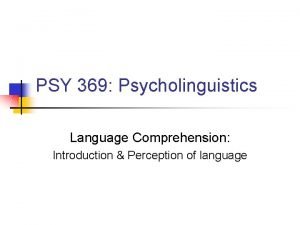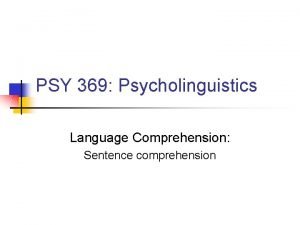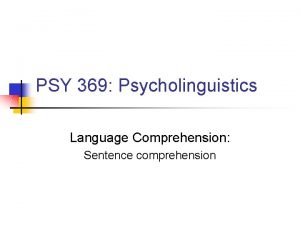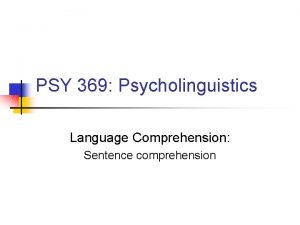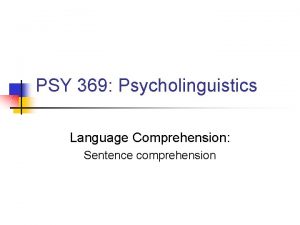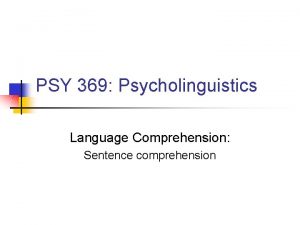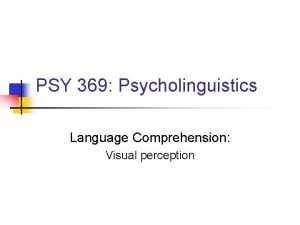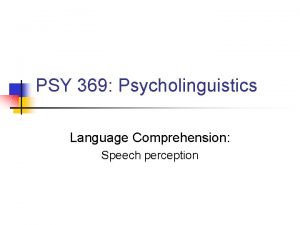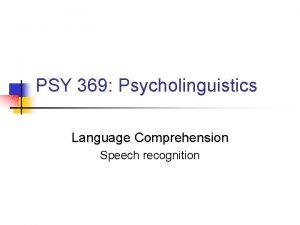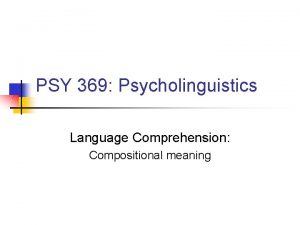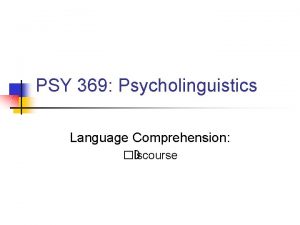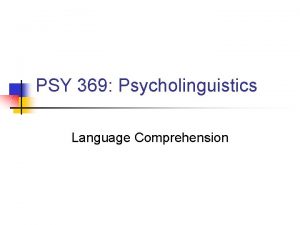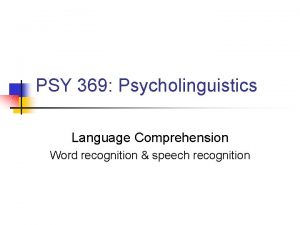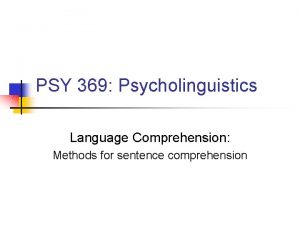PSY 369 Psycholinguistics Language Comprehension Introduction Perception of












































- Slides: 44

PSY 369: Psycholinguistics Language Comprehension: Introduction & Perception of language

Some of the big questions Production “the horse raced past the barn” How do we turn our thoughts into a spoken or written output?

Some of the big questions Production Comprehension “the horse raced past the barn” How do we turn our thoughts into a spoken or written output? How do we understand language that we hear/see?

Overview of comprehension Input The cat chased the rat. Language perception c a t /k/ /ae/ /t/ Word recognition cat dog cap wolf tree yarn cat claw fur hat Syntactic Semantic & pragmatic analysis S NP VP the cat V NP chased the rat

The Comprehender’s Problem n Ambiguity n Must take a potentially ambiguous serial acoustic (or visual) input, and recover the intended meaning The cat chased the rat.

The Comprehender’s Problem n Ambiguity n Must take a potentially ambiguous serial acoustic (or visual) input, and recover the intended meaning Oronyms I scream for ice scream The stuffy nose can lead to problems. The stuff he knows can lead to problems. Why don’t you take a nice cold shower? Why don’t you take an ice cold shower? See here for more oronyms

The Comprehender’s Problem n Ambiguity n Must take a potentially ambiguous serial acoustic (or visual) input, and recover the intended meaning Groucho Marx shot an elephant in his pajamas Good shot How he got into my pajamas I’ll never know

The Comprehender’s Problem n Ambiguity n Must take a potentially ambiguous serial acoustic (or visual) input, and recover the intended meaning “Oh no, Lois has been hypnotized and is jumping off the bank!” Money “bank” River “bank”

The Comprehender’s Problem n Ambiguity n Must take a potentially ambiguous serial acoustic (or visual) input, and recover the intended meaning “Uncle Bob kicked the bucket last night” “Can you pass the salt” Uncle Bob “Sure as soon as I’m done using it. ” “Nope, somebody glued it to the table. ”

The Comprehender’s Problem n Different signals n Reading and listening are very different If reading were like listening whereareyougoing n n Different speakers speak differently Lots of differences in written/printed language

Different signals Visual word recognition Speech Perception Where are you going n n Some parallel input Orthography n n n Letters Clear delineation Difficult to learn n n Serial input Phonetics/Phonology n n n Acoustic features Usually no delineation “Easy” to learn

Different signals Visual word recognition Speech Perception Where are you going n n Some parallel input Orthography n n n Letters Clear delineation Difficult to learn n n Serial input Phonetics/Phonology n n n Acoustic features Usually no delineation “Easy” to learn

Speech perception n Articulatory phonetics n Production based n n Place and manner of articulation Acoustic phonetics n Based on the acoustic signal n Formants, transitions, co-articulation, etc.

Speech production to perception n Acoustic cues are extracted and stored in sensory memory and then mapped onto linguistic information n Air is pushed into the larynx across the vocal cords and into the mouth nose, different types of sounds are produced. n n The different qualities of the sounds are represented in formants The formants and other features are mapped onto phonemes

Acoustic features n Spectrogram n n Frequency n Time on the x-axis Frequency (pressure under which the air is pushed) on the y-axis Amplitude is represented by the darkness of the lines time Give it a try: Acoustic software

Acoustic features n Formants - bands of resonant frequencies n n Formant transitions - up or down movement of formants Steady states - flat formant patterns Bursts - sudden release of air Voice onset time (VOT) - when the voicing begins relative to the onset of the phoneme

Formants in a wide-band spectrogram <-- Formant transitions --> <-- F 3 <-- F 2 <-- F 1 n Formants - bands of resonant frequencies n n Formant transitions - up or down movement of formants Steady states - flat formant patterns

Formants in a wide-band spectrogram Burst --> <-- Formant transitions --> <-- F 1 n Bursts – sudden release of air <-- F 3 <-- F 2

Voice-Onset Time (VOT) bit 5 ms pit 40 ms

Categorical Perception n Categorical Perception is the perception of different sensory phenomena as being qualitatively, or categorically, different. n Liberman et al (1957) n Used the speech synthesizer to create a series of syllables panning categories /b/, /d/, /g/ (followed by /a/) n n n Was done by manipulating the F 2 formant Stimuli formed a physical continuum Result, people didn’t “hear” a continuum, instead classified them into three categories

Categorical Perception n Liberman et al (1957) 1. Set up a continuum of sounds between two categories /ba/ 1 - . . . 3 … /da/ 5 … 7

Categorical Perception n Liberman et al (1957) 2. Run an identification experiment Sharp phoneme boundary 100 n % /ba/ Our perception of phonemes is categorical rather than continuous. 0 1 . . . 3 … 5 … 7

Hard Problems in Speech Perception Wave form n Linearity (parallel transmission): Acoustic features often spread themselves out over other sounds n Where does show start and money end? n Demo's and info

Hard Problems in Speech Perception Wave form n Invariance: n One phoneme should have a one waveform n n But, the /i/ (‘ee’) in ‘money’ and ‘me’ are different There aren’t invariant cues for phonetic segments n Although the search continues n Demo's and info

Hard Problems in Speech Perception Wave form n Co-articulation: the influence of the articulation (pronunciation) of one phoneme on that of another phoneme. n Essentially, producing more than one speech sound at once n Demo's and info

Hard Problems in Speech Perception n Trading relations n Most phonetic distinctions have more than one acoustic cue as a result of the particular articulatory gesture that gives the distinction. n n slit–split – the /p/ relies on silence and rising formant, different mixtures of these can result in the same perception Perception must establish some "trade-off" between the different cues.

Hard Problems in Speech Perception n The Mc. Gurk effect: Mc. Gurk and Mac. Donald (1976) • Showed people a video where the audio and the video don’t match • Think “dubbed movie” n n Mc. Gurk effect 2 • visual /ga/ with auditory /ba/ often hear /da/ n Implications • phoneme perception is an active process • influenced by both audio and visual information

Motor theory of speech perception n A. Liberman (and others, initially proposed in late 50’s) n n Direct translation of acoustic speech into articulatorally defined categories Holds that speech perception and motor control involved linked (or the same) neural processes n Theory held that categorical perception was a direct reflection of articulatory organization n Categories with discrete gestures (e. g. , consonants) will be perceived categorically Categories with continuous gestures (e. g. , vowels) will be perceived continuously There is a speech perception module that operates independently of general auditory perception

Frontal slices showing differential activation elicited during lip and tongue movements (Left), syllable articulation including [p] and [t] (Center), and listening to syllables including [p] and [t] (Right) Pulvermüller F et al. PNAS 2006; 103: 7865 -7870 © 2006 by National Academy of Sciences

Motor theory of speech perception n Some problems for MT n n Categorical perception found in non-speech sounds (e. g. , music) Categorical perception for speech sounds in non-humans n Chinchillas can be trained to show categorical perception of /t/ and /d/ consonant-vowel syllables (Kuhl & Miller, 1975)

Other theories of speech perception n Direct Realist Theory (C. Fowler and others) n n n Similar to Motor theory, articulation representations are key, but here they are directly perceived Perceiving speech is part of a more general perception of gestures that involves the motor system General Auditory Approach (e. g. , Diehl, Massaro) n Do not invoke special mechanisms for speech perception, instead rely on more general mechanisms of audition and perception n For nice reviews see: n Diehl, Lotto, & Holt (2003) n Galantucci, Fowler, Turvey (2006)

Top-down effects on Speech Perception n n Phoneme restoration effect Sentence context effects

Phoneme restoration effect Listen to a sentence which contained a word from which a phoneme was deleted and replaced with another noise (e. g. , a cough) The state governors met with their respective legi*latures convening in the capital city. * /s/ deleted and replaced with a cough Click here for a demo and additional information

Phoneme restoration effect Typical results: Participants heard the word normally, despite the missing phoneme Usually failed to identify which phoneme was missing Interpretation We can use top-down knowledge to “fill in” the missing information

Phoneme restoration effect Further experiments (Warren and Warren, 1970): What if the missing phoneme was ambiguous The *eel was on the axle. The *eel was on the shoe. The *eel was on the orange. The *eel was on the table. Results: Participants heard the contextually appropriate word normally, despite the missing phoneme

Phoneme restoration effect n Possible loci of phoneme restoration effects n Perceptual loci of effect: n n Lexical or sentential context influences the way in which the word is initially perceived. Post-perceptual loci of effect: n Lexical or sentential context influences decisions about the nature of the missing phoneme information.

Beyond the segment Shillcock (1990): hear a sentence, make a lexical decision to a word that pops up on computer screen (cross-modal priming) Hear: The scientist made a new discovery last year. NUDIST

Cross-modal priming Shillcock (1990): hear a sentence, make a lexical decision to a word that pops up on computer screen (cross-modal priming) Hear: The scientist made a novel discovery last year. NUDIST

Cross-modal priming Shillcock (1990): hear a sentence, make a lexical decision to a word that pops up on computer screen (cross-modal priming) Hear: The scientist made a novel discovery last year. The scientist made a new discovery last year. faster

Cross-modal priming Shillcock (1990): hear a sentence, make a lexical decision to a word that pops up on computer screen (cross-modal priming) Hear: The scientist made a novel discovery last year. The scientist made a new discovery last year. faster NUDIST gets primed by segmentation error Although no conscious report of hearing “nudist”

Beyond the segment n Prosody and intonation n English: n Speech is divided into phrases. n Word stress is meaningful in English. n Stressed syllables are aligned in a fairly regular rhythm, while unstressed syllables take very little time. n Every phrase has a focus. n An extended flat or low-rising intonation at the end of a phrase can indicate that a speaker intends to continue to speak. n A falling intonation sounds more final.

Beyond the segment n Prosodic factors (supra segmentals) n Stress n n Rate n n Emphasis on syllables in sentences Speed of articulation Intonation n Use of pitch to signify different meanings across sentences

Beyond the segment n Stress effects n On meaning n n “black bird” versus “blackbird” Top-down effects on perception n Better anticipation of upcoming segments when syllable is stressed

Beyond the segment n Rate effects n How fast you speak has an impact on the speech sounds n n Faster talking - shorter vowels, shorter VOT Normalization n Taking speed and speaker information into account n Rate normalization n Speaker normalization
 Language comprehension in psycholinguistics
Language comprehension in psycholinguistics Puldow cross
Puldow cross Comprehension of words in psycholinguistics
Comprehension of words in psycholinguistics Language loss in psycholinguistics
Language loss in psycholinguistics 369 times 2
369 times 2 Cs 369
Cs 369 369
369 Ge 369
Ge 369 Norm bartley
Norm bartley Beyond comprehension meaning
Beyond comprehension meaning 369 power
369 power Bio 369
Bio 369 369 project
369 project Tom overbye
Tom overbye 369 power
369 power Datapy.bar
Datapy.bar 369 power
369 power 68000
68000 Euro psy
Euro psy Ucf io psychology
Ucf io psychology Psy2055
Psy2055 Psy 2055
Psy 2055 Psy 2055
Psy 2055 Psy
Psy Daniel sanin
Daniel sanin Psy
Psy Psy
Psy Phonological loop
Phonological loop Psy
Psy Psy 226
Psy 226 Maria took a drink from a container marked milk
Maria took a drink from a container marked milk Alla kulikova
Alla kulikova Psy ku
Psy ku Psy walsh
Psy walsh Opis mačky po anglicky
Opis mačky po anglicky Vzor srdce slova
Vzor srdce slova 11 psy
11 psy Regression psy
Regression psy Psy
Psy Psy 335 purdue
Psy 335 purdue What is psycholinguistics
What is psycholinguistics The scope of psycholinguistics
The scope of psycholinguistics History of psycholinguistics
History of psycholinguistics Psycholinguistics example
Psycholinguistics example Psycholinguistics
Psycholinguistics
